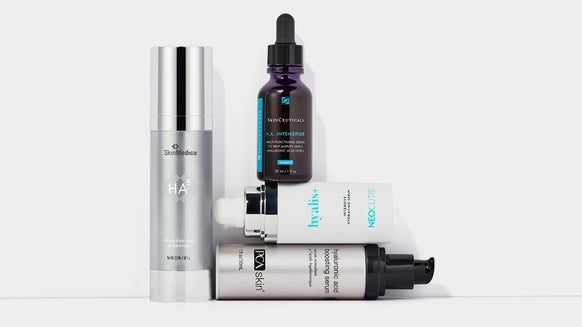Who Gets Crepey Skin and How to Prevent It From Happening?
One of the most irrefutable signs of aging is the crinkled, crepey look that certain areas of the skin take on with the inevitable passage of time. Beneath your eyes. Under your arms. Your knees. But knowledge, as always, is power—and learning about the underlying causes of crepey skin can help you postpone its appearance and treat it when it does start to rear its crinkly head. We spoke to two board-certified dermatologists, Dr. Julia Tzu, founder and Medical Director of Wall Street Dermatology in New York City, and Rebecca Kazin, MD, FAAD of the Washington Institute of Dermatologic Laser Surgery and the Johns Hopkins Department of Dermatology, who gave us the skinny on preventing and diminishing the appearance of crepey skin.
What Causes Crepey Skin
Basically, the thinner the skin, the more prone it is to crepiness—and according to Dr. Tzu, age, chronic sun damage and excessive movement of the musculature underneath the skin all contribute to thinning. “You tend to see crepey skin in older, fair-skinned people who smoke or have baseline dry skin,” she says.
“Typically, fair skinned people have the most sun damage and collagen breakdown, which thins skin and causes that crepey appearance,” confirms Dr. Kazin. However, even if you’re not of the fair-skinned variety, the areas of the skin that are naturally thin are likely to develop creping at some point. “Commonly, crepey skin first begins to present around the eyes, the inner crease of the elbow, or the armpit area,” Dr. Kazin says. “Rapid weight loss can also cause creping.”
Keeping Creping at Bay
While there is little you can do about the passage of time or a naturally fair complexion, there are steps you can take to slow down the advent of crinkly skin. “Avoid excessive sun exposure, avoid smoking, and use liberal and frequent facial moisturization,” Dr. Tzu advises. “Also, Botox can be used to reduce fine wrinkles underneath the eyes by decreasing excessive and unnecessary muscular contractions.” And since you can’t avoid the sun completely, Dr. Kazin recommends wearing a strong SPF, particularly in those areas where the skin is naturally thin. “Also, use products like Retin A that help build collagen over time, which can help prevent crepey skin,” she adds.
Diminishing the Look of Crepiness
Luckily, there are a variety of treatments that can offset the appearance of crepey skin. As far as over-the-counter remedies go, “a super-hydrating, cream-based moisturizer will help plump out the fine lines that give the skin a crepey look,” says Dr. Tzu. For the eye area, “I'd use an eye cream with hyaluronic acid,” says Dr. Kazin, “and also look for products with peptides, which can sit on the skin and make it look less crepey.” Very mild AHA lotions will also help cell turnover, says Dr. Kazin. “They moisturize and make the area look less dehydrated.”
For more aggressive treatment, a visit to your dermatologist will uncover a wealth of options. “A fractionated, non-ablative laser is what I recommend for the eyelids, and if there is volume loss, I may use a filler and then laser over the top,” says Dr. Kazin. “For the body (think arms, elbows, knees, and décolleté), I use a lighter non-ablative laser called Clear + Brilliant to help boost cell turnover, improve skin's texture and aid in product absorption.” For deeper skin tightening with superficial resurfacing, Dr. Kazin will sometimes combine the non-ablative laser with a skin-tightening laser such as Ulthera or Thermage.

From the latest hair and makeup trends to the best solutions for your skin issues, we've got all your beauty concerns covered!
Related Posts

The Green Beauty Revolution: Why Green Is In + the Top Natural Beauty Brands You Need to Know Now












